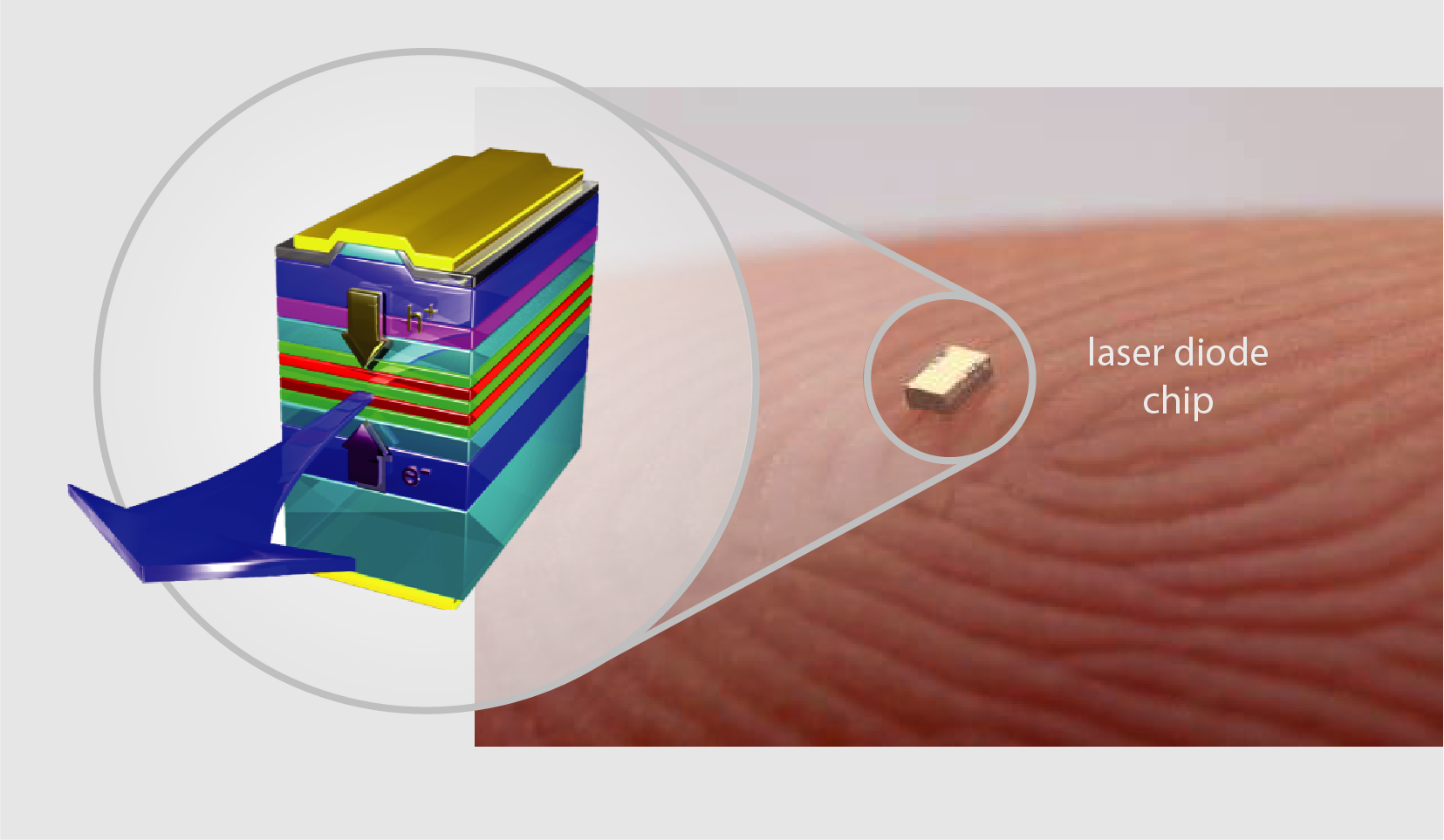Mathematics meets semiconductor technology: Development of new and compact UVC lasers for medicine and biotechnology
The Leibniz Association will fund the joint project "UV Lasers - From Modeling and Simulation to Technology (UVSimTech)" for three years with nearly €1 million within the Leibniz Competition.

(Figure: TU Berlin/Kremzow (3D scheme), FBH/schurian.com (photo))
Through a combination of mathematical modeling, simulation and experiments, problems of such UVC laser diodes will be identified and their technological maturity advanced. The goal is to develop an electrically pumped semiconductor laser diode based on aluminum gallium nitride (AlGaN) for coherent emission in the UVC spectral region.
The UVSimTech consortium combines the multidisciplinary expertise of the Berlin Weierstrass Institute (WIAS) in mathematical modeling and simulation of complex semiconductor lasers and of the Institute of Electromagnetic Fields of the Friedrich-Alexander-Universität Erlangen-Nürnberg (FAU) with materials science know-how, coming from the Berlin Leibniz-Institut für Kristallzüchtung (IKZ) and the Ferdinand-Braun-Institut, Leibniz-Institut für Höchstfrequenztechnik (FBH, also in Berlin), as well as from the experts in UV photonics at the TU Berlin. In addition to the importance of the project goals, the reviewers particularly recognized the outstanding composition of the consortium as well as the scientific strength of the participating partners in their respective fields. Project coordinator Dr. Thomas Koprucki (WIAS) emphasizes: "With UVSimTec we want to create a collaborative interdisciplinary network to master the challenges of UVC laser diodes by pooling complementary expertise."

